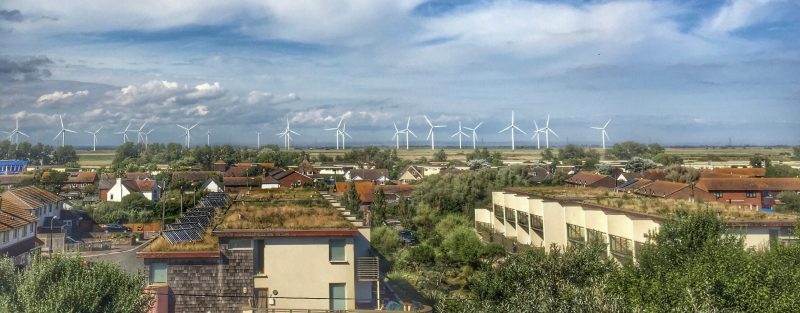Types of Green Roofs.

Green roofs are internationally placed in three different ‘types’: Of course there is some cross over between the categories.
- Intensive – parks and gardens including Urban Agriculture
- Semi-intensive – garden green roofs
- Extensive – natural low maintenance green roofs
- Blue-green roofs – that combing green roof and blue roof technologies to maximise water storage
- Biosolar green roofs – where solar energy and green roofs are combined to provide renewable energy and deliver biodiversity
The planning, implementation and maintenance of all these types is covered in the UK Green roof Code of Practice. known as the GRO code. All green roof codes of practice globally are based on the German FLL.

Although extensive green roofs are perceived as using sedums and succulents, wildflowers can be used. This is an approach that is common in the UK and Switzerland. In the UK there are three sub-categories:
- Extensive sedum
- Extensive biodiverse
- Brown roofs
In the recent past, which Livingroofs.org was partly responsible for, brown roofs was a widely used term. Although some people still refer to old style brown roofs, they should be considered as extensive biodiverse roofs. They should also be designed and considered as ecological landscapes and not as a product.
A summary of the general characteristics of each category can be seen below. Although there is some cross over, the maintenance, costs and structural requirements do differ. Furthermore we have provided an overview of the broad benefits to the environment of each.
Table: General Features of the Green Roof
| Type ➔ | Extensive | Semi-intensive | Intensive |
|---|---|---|---|
| Use | Ecological Landscape | Garden/Ecological Landscape | Garden/Park |
| Type of vegetation | Moss-Herbs-Grasses | Grass-Herbs-Shrubs | Lawn/Perennials, Shrubs, Trees |
| Benefit | W,T,B | W,T,B,A | W,T,B,A |
| Depth of Substrate | 60-200mm | 120-250mm | 150-400mm |
| Weight | 60-150 kg/m2 | 120-200 kg/m2 | 180-500 kg/m2 |
| Cost | Low | Periodic | High |
W= Water, T= Thermal, B= Biodiversity, A= Amenity